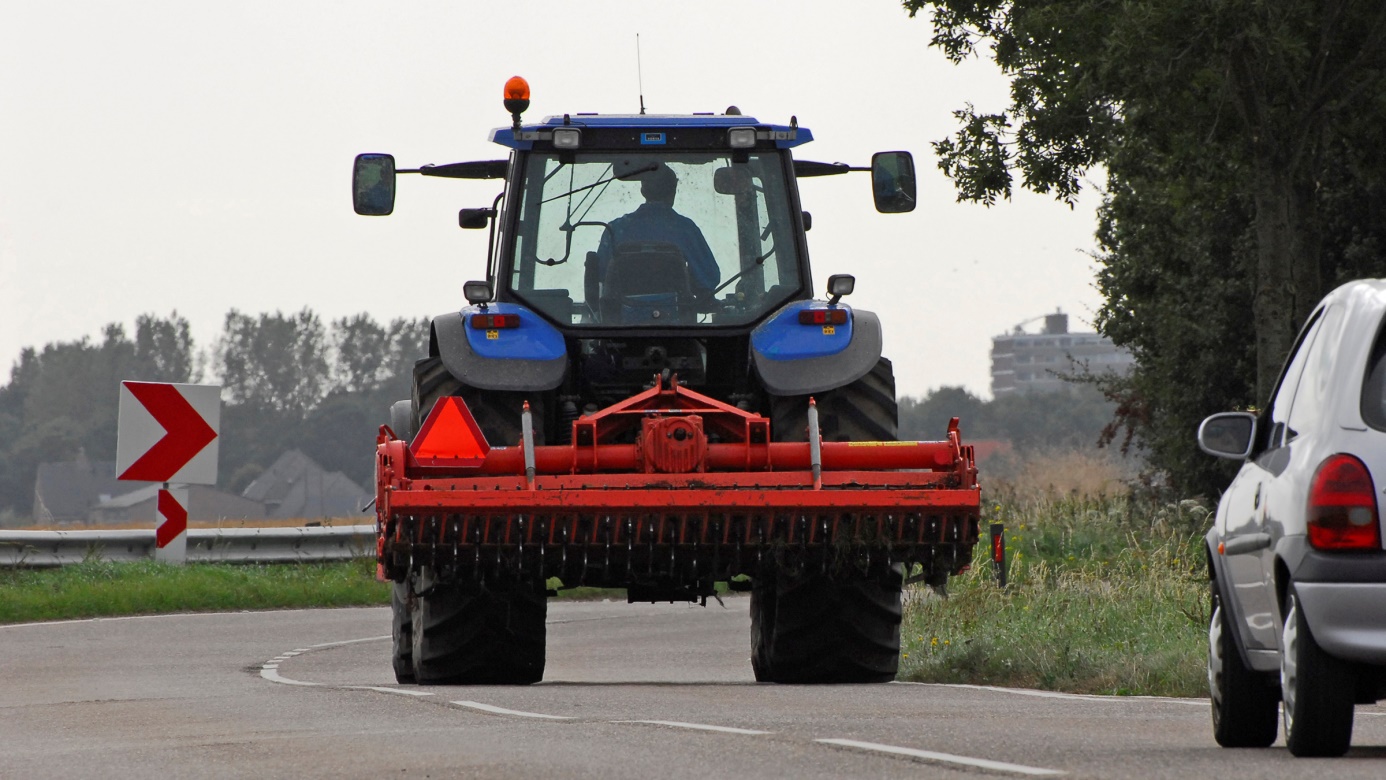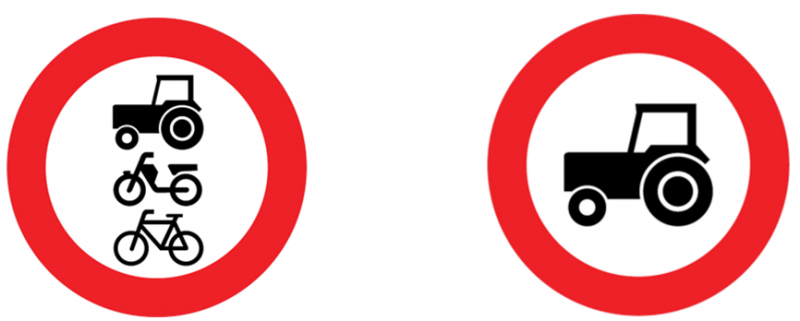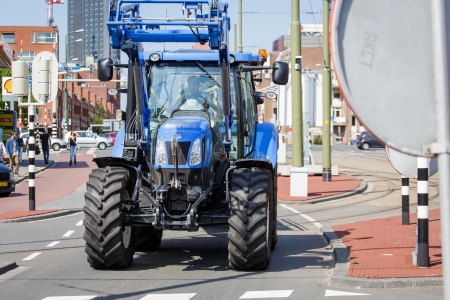There are various legal rules that apply for agricultural vehicles. These can be subdivided into 1) rules for the agricultural vehicle itself, 2) rules for the place on the road and 3) rules for the driver.
Rules for the agricultural vehicle
Weight, construction and dimensions
The Vehicle regulations (part of the Road Traffic Act 1994; in Dutch) regulate the maximum load and dimensions of tractors, trailers and motor vehicles with limited speed. Any sharp parts that can cause injury to road users, must be screened off before entering the public road. The road authority may grant exemption[i] for different dimensions. According to the Labour Conditions Act (in Dutch) mobile work equipment on which persons travel (e.g. tractors and self-propelled machinery), must have facilities that limit the dangers for these persons during the ride as much as possible. This can be done by means of a roll-over protection structure or a cage construction. From 1 January 2016, a new European legal type-approval system for agricultural vehicles applies (EU Regulation 167/2013). Among others, this regulation harmonises the type-approval for tractors in the EU, so that an approval for a specific type of tractor in one country is also valid in all the other EU member states.
Sight and visibility
Like other vehicles, agricultural vehicles must be equipped with dipped-beam headlamps (front), city lights (on fenders), indicators, tail lights, brake lights and a left outside mirror (Vehicle Regulations; in Dutch). In addition, they must have two or four non-triangular red retro-reflectors at the rear. They must carry a yellow flashing or blinking light if they are wider than 2.60 m or when they perform work on or alongside the public road (Scheme Optical and Sound Signals 2009; in Dutch). Characteristic of a tractor is the red retro-reflector in the form of a truncated triangle at the rear. The Dutch Safety Board concludes that despite these lighting requirements the visibility and recognisability of agricultural vehicles can be a problem in the dark [2].
 Figure 3. Tractor with tool (harrow), flashing light and at the rear left the retro-reflecting triangle (photo: H. Dijkema).
Figure 3. Tractor with tool (harrow), flashing light and at the rear left the retro-reflecting triangle (photo: H. Dijkema).
Maximum speed and braking power
In the Netherlands, the legal maximum speed for agricultural vehicles is 25 km/h, but tractors can often drive (much) faster. See also the question How fast do agricultural vehicles drive? There are also requirements for the braking power of agricultural vehicles. For a maximum construction speed of 30 km/h, the braking deceleration should at least be 2.4 m/s2. For a construction speed from 30 to 40 km/h this should be 3.1 m/s2 and for higher construction speeds this should at least be 4.5 m/s2. This means that the allowed stopping distance (reaction + braking distance) of a tractor is approximately 15 m at a speed of 25 km/h and approximately 30 m at a speed of 40 km/h. Therefore the maximum stopping distance of a tractor is 30 to 50% longer than that of a passenger car. Although according to the Vehicle Regulations (in Dutch) the braking deceleration of the trailer must be the same as that of the tractor, the actual braking distance of the combination may in fact be considerably longer.
Rules for agricultural vehicles’ place on the road
Legally, agricultural vehicles are allowed to drive on all roads with the exception of trunk roads, motorways and roads that are closed to slow traffic in general or for agricultural vehicles and motor vehicles with limited speed in particular (traffic signs C9 and C8 respectively).
C9 |
C8 |

Rules for the driver of an agricultural vehicle
The driver must be at least 16 years old and (since 1 July 2015) have the T-licence to drive a tractor or a motor vehicle with limited speed on public roads in the Netherlands. Drivers who already had a B-licence on 1 July 2015 are not required to have a separate T-licence. The T-category is automatically added when they have to renew their licence. No licence duty applies for drivers of motor vehicles with limited speed narrower than 1.30 m that are used for mowing, weed control, sweeping, snow removal, prevention of slipperiness, or dog poo collecting and that cannot pull a trailer or interchangeable machine. In EU countries the minimum requirement for driving an agricultural vehicle in is a B-licence or a T-licence.
Before the introduction of the T-license, a ‘certificate of professional competence’ was sufficient if the driver was 16 or 17 years old and worked with a tractor on the public road as an employee. Before 1 July 2016, holders of the certificate of professional competence could exchange this document for a T-licence. See also the question What is the road safety effect of the T-licence?
[i] The exemption is granted to the driver (not to the vehicle), is restricted to a limited number of roads, and must be applied for at each individual road authority (municipality)
